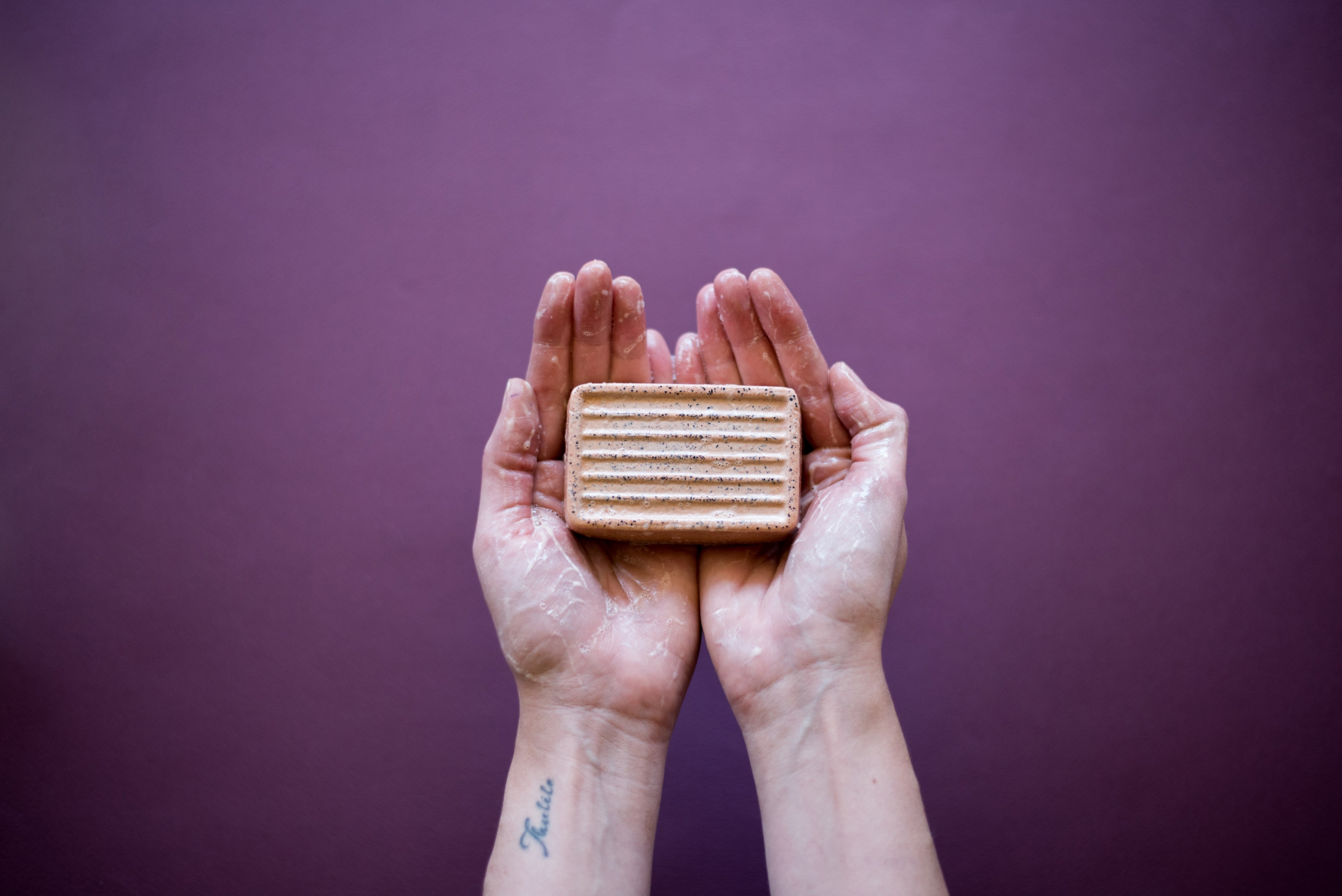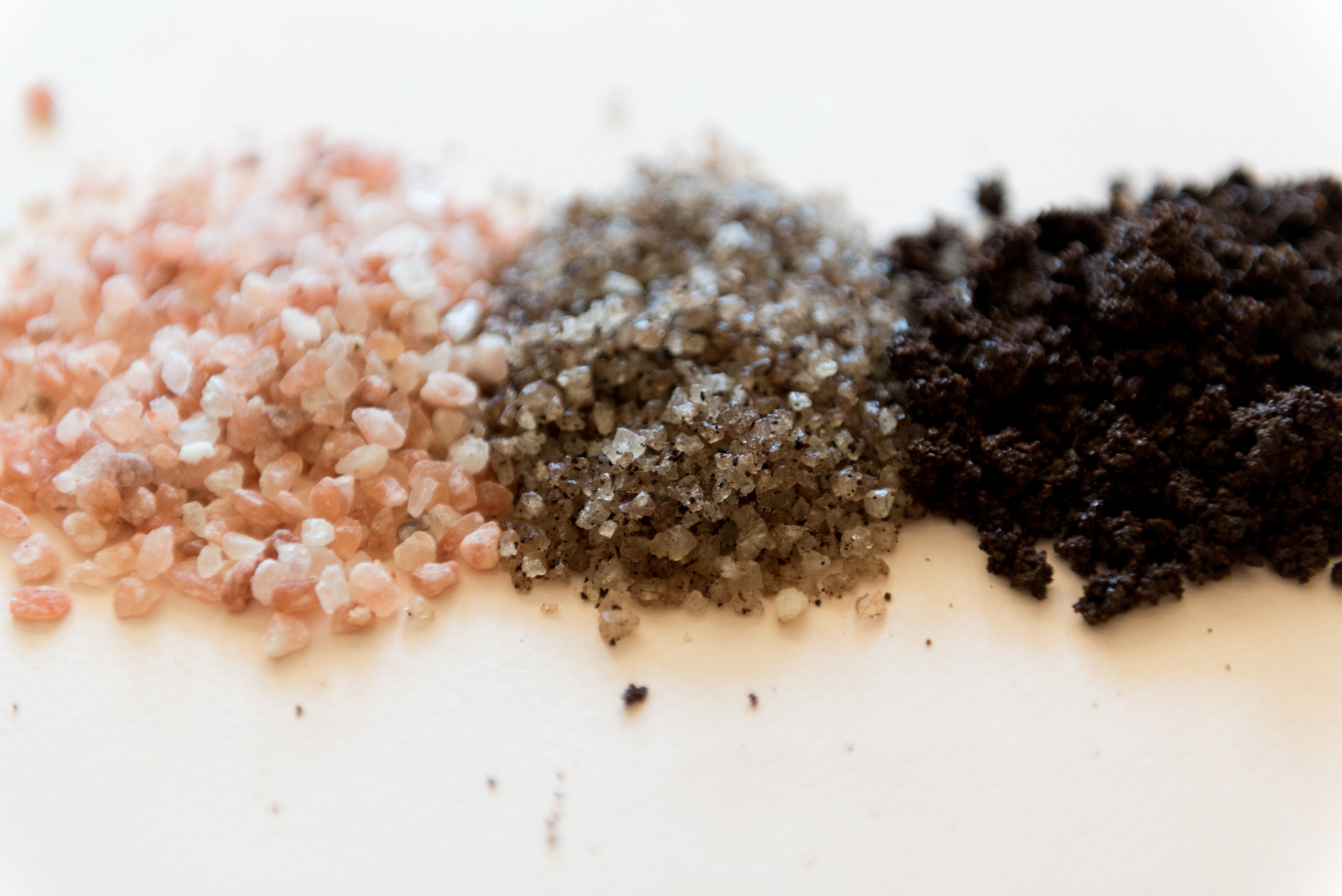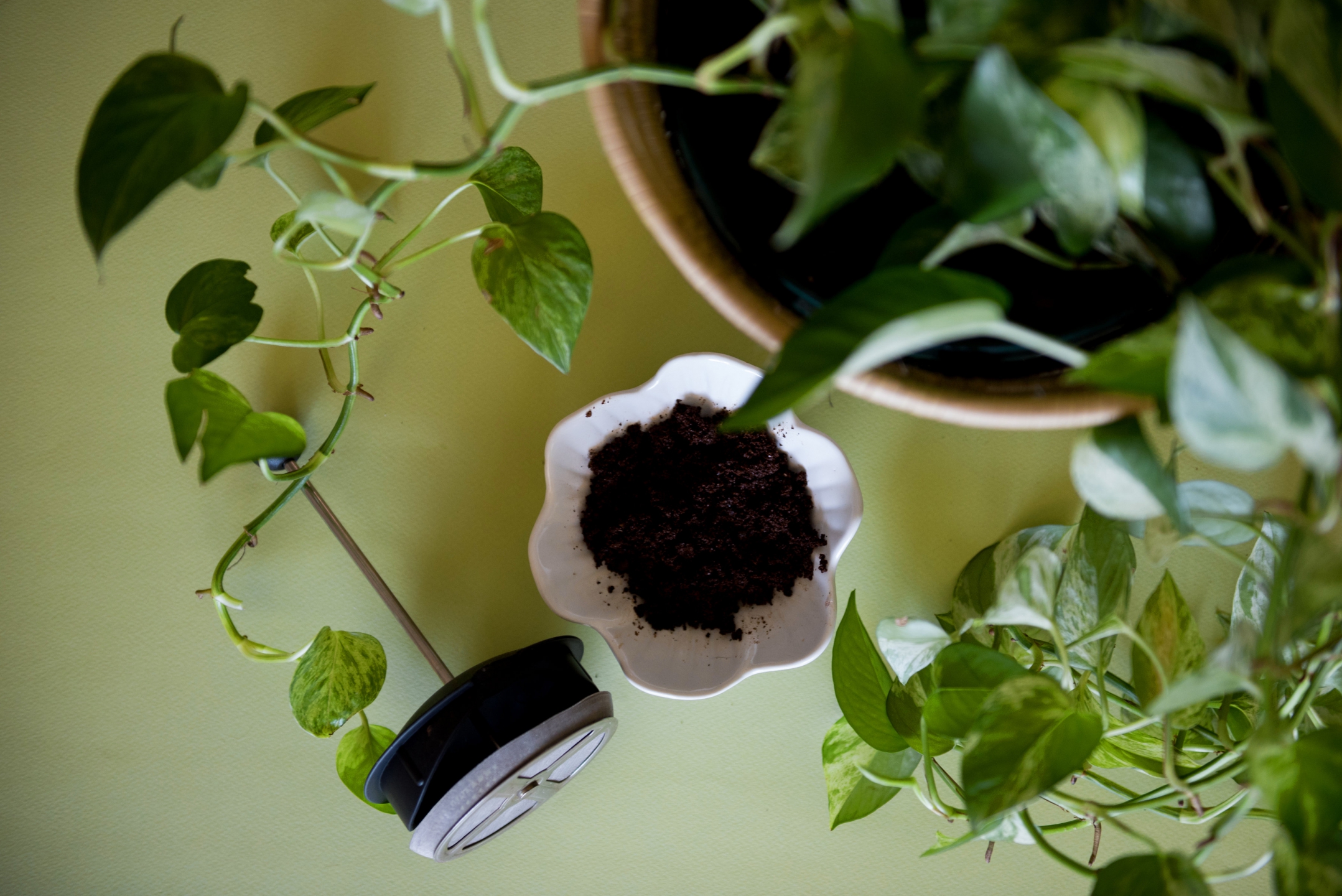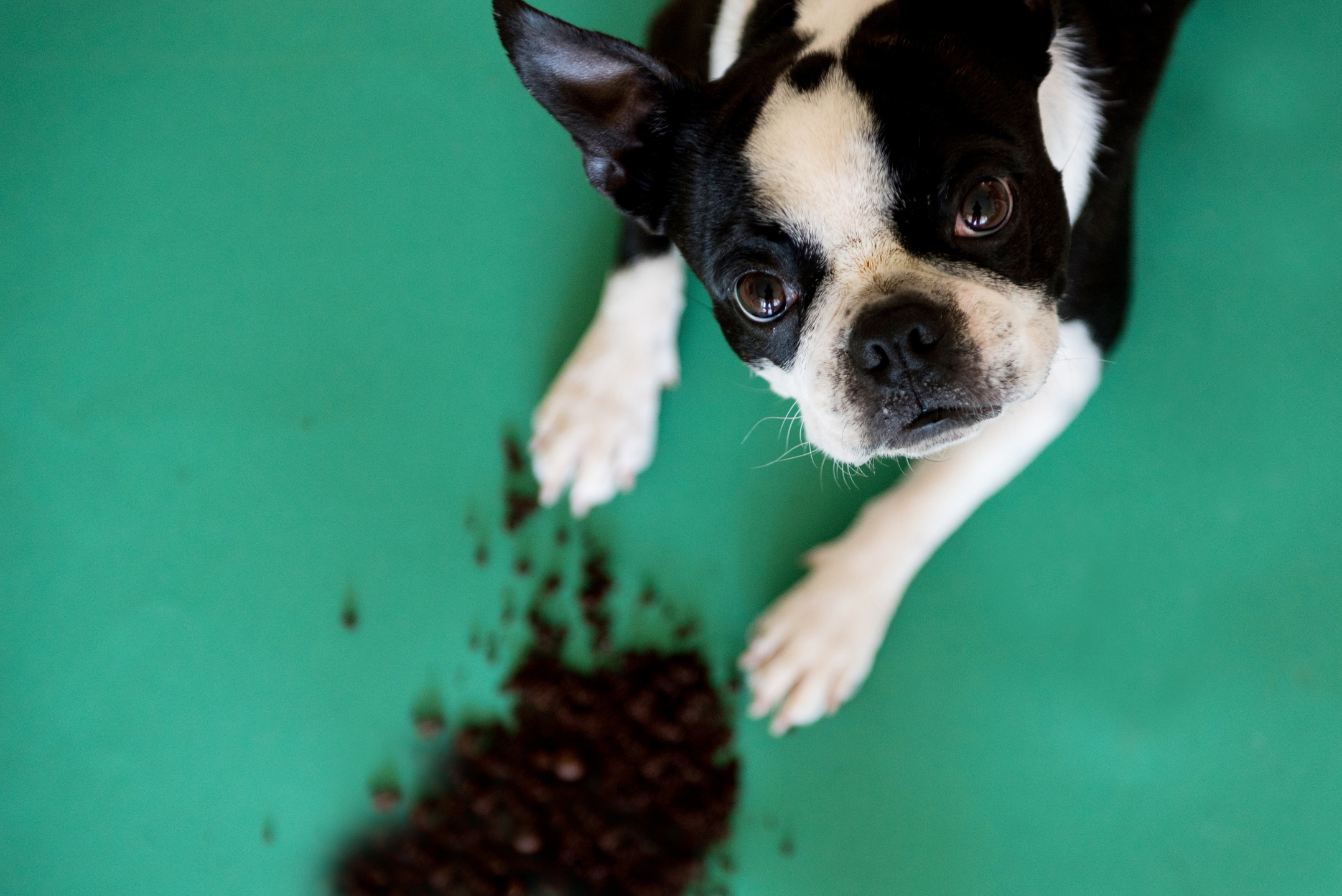Photos by Derryn Schmidt Photography
In the age of reuse and recycle, used coffee has incredible benefits beyond being delicious. I mean, it also smells incredible, that must be good for something, right? (yes: candles! Hand deodoriser!) We focus on two areas to utilise your spent coffee grounds that are simple and easy: your body and your garden.
Skincare
To explain the benefits of coffee for your skin, we turned to an expert, the wonderful Leandri van der Wat, a coffee fanatic and an accomplished scientist currently working in the skincare industry.

A while back, I read a headline about a cosmetics company that uses all sorts of food ingredients to make ‘fresh’ skincare. The story was about the Lush Adzuki bean massage bar product, which had beans sprouting in unsuspecting user’s drains and soap dishes. Since I currently work as a skincare scientist, it got me thinking about bringing two of my loves together: coffee and the application of chemistry in everyday life. I rummaged through my cupboard for some Ethiopian Sidamo green beans I still had left from a trip to Addis, and decided to make my own massage bar using a blend of fats and a bit of elbow grease.
It seems I’m not alone in this desire to work coffee into everyday products. There’s been a recent surge in using coffee for all sorts of items, ranging from perfume (most notably Black Opium by Yves Saint Laurent) to roller-ball eye serums. A core characteristic of any good scientist is a heavy dose of skepticism, so we tend to scrutinize the facts before we buy into the latest marketing trends. After some research into whether coffee benefits the skin and how it does, I’m happy to confirm that there’s enough evidence to kill my cynicism. Coffee can be as beneficial on the skin, as it is on the mood.
Of course, there are limits to how much your skin can benefit from our favourite fruit. The compounds within coffee that appear to benefit the skin most are your flavonoids and caffeine. The best effects on the skin are seen with green coffee extract, simply because the beans are higher in beneficial antioxidants before they’re roasted. However, of the compounds beneficial to the skin, both of these are found in the roasted bean, which means you can very easily use the grounds caught in your filter paper or in your French Press.
Fortunately caffeine can pass through the skin, and so it makes an excellent solution to skin that appears ‘tired’ as well as puffy eyes. The reason for this is because caffeine can both energize the skin and reduce the flow of fluids, reducing puffiness that is associated with a build up of fluids around the eye. For this reason, lots of cosmetics companies have made eye serums that contain concentrated caffeine. Your flavonoids can also penetrate the skin, and here they can protect the skin from damaging free radicals.
What should you do with this information? Harass your local barista for the contents of his knock-box and immerse your face in all its goodness? Urm, no. That would be weird for every one. Although coffee can be great for the skin, some things are left to the professionals. If you’re keen to try using your grounds for some DIY-beauty hacks, I have a few recommendations.
Firstly, coffee makes a great scrub, and many local companies are making fantastic products to exfoliate the skin. My advice is to turn your coffee into a scrub with some coconut oil, sugar and a bit of lemon juice – but to avoid the facial area at all costs. Scrubbing areas of the body to reduce the appearance of dry skin or cellulite will work wonders, but the grounds can really damage the delicate skin on the face so fight the temptation to apply your DIY-scrub on your mug.

Another genius way to use your grounds would be on your hair. The coffee can stimulate your hair follicles to grow, creating gorgeous locks. However, if you’ve just had a bleach job done, I’d rather give this one a skip because it might add a bit of brown to your hair shade. Mix up the grounds with your shampoo and work it in for a few minutes before giving your hair a thorough rinse.
If none of this seems appealing to you, just go brew a cup of coffee and seep in the joy that comes as a standard side order with your brew. After all, happy people are the prettiest.
Ed’s Note: That aroma we spoke of earlier does in fact come in handy, excuse the pun, for removing odors such as garlic or onion from your hands after cooking. No matter how much soap we use, the smell just won’t to go away. If you keep a small pot of used grounds in your kitchen and rub on your hands with some water, hey presto, you smell like coffee instead of garlic. That love of onion and garlic will from now on only be tasted in dishes and not when you’re eating dessert or breakfast the next day. And the exfoliation is an added bonus!
Gardening
The first rule of using coffee in your garden is: Moderation. Used coffee is very nutrient rich organic matter and should be treated as potent!

You can add grounds directly to the soil in your garden by scratching it into the top couple centimetres of soil, or just sprinkle the grounds on top and leave it alone. Be careful, because If you add coffee grounds to the soil in a thick layer, they will be compacted into a crust and be nearly impermeable to water. But if the grounds are incorporated into the soil, they greatly improve both the texture as well as the organic content. Being slightly acidic, coffee grounds lower the pH of the soil. They are very slow to break down, releasing nitrogen and other nutrients to the plants over an extended period of time, while keeping the soil loose and aerated. This is particularly beneficial for clayey soils which are usually alkaline and heavy, but all soil types can do with the occasional dose of coffee fertilizer. Coffee grounds release a good amount of nitrogen as they decompose. This is one of the three macro nutrients every plant needs for healthy growth, the other two being potassium and phosphorous. Leafy vegetables like spinach and cabbages do well with extra amounts of nitrogen. We hear that mushrooms react particularly well to coffee. You can even find kits that set you up with your own little espresso-fuelled mushroom farm (www.espresso-mushrooms.com), epic!
If you’re having a slug problem, you can create a slug and snail barrier with your coffee grounds. The grounds are both abrasive and slightly acidic, so a barrier of grounds placed near slug-prone plants may just save them from these garden pests as the slugs are unable to cross the barrier unscathed.
Used coffee grounds from most brew methods have plenty of coffee power left. If you soak the grounds in water overnight and filter out the tea-coloured liquid, you will have a completely organic foliar spray that packs in some antimicrobial power along with nutrients for your garden plants. It is found to repel insects and caterpillars. Pop it in your spray bottle/atomiser and give your pants a good soaking. Be sure to filter out the coffee grounds as they can easily clog up your spraying tool! The lingering coffee smell or flavour could be making the leaves less appealing to the critters.
Coffee is generally considered a good ingredient for the compost pile. It is a rich source of nitrogen. However there's been some concern that when composting coffee it will alter the pH of the pile. Coffee is acidic, but the acid is water soluble, so most of the acid is in the liquid we drink and very little remains in the used grounds. By the time the grounds make it to your compost heap, they have a fairly neutral pH that is somewhere in the area of 6.5 - 6.8 and perfect for adding to your compost heap. Again, remember that moderation is key!
NOTE: In the same way that coffee repels pests on your plants, fleas are also reported to dislike a coffee. If you’re looking for a natural and cost effective solution in your pet’s battle against fleas, there is a solution for dogs and cats. For dogs, grab a handful of coffee grounds with or without shampoo and apply on top of their fur coat. For best results, use this method in conjunction with your dog’s usual anti-flea medications to kill off eggs.
